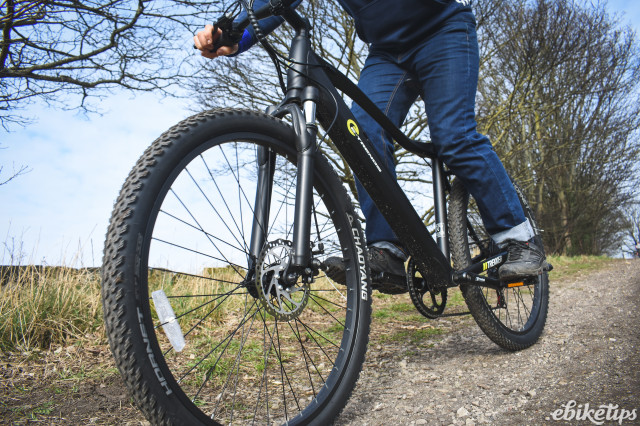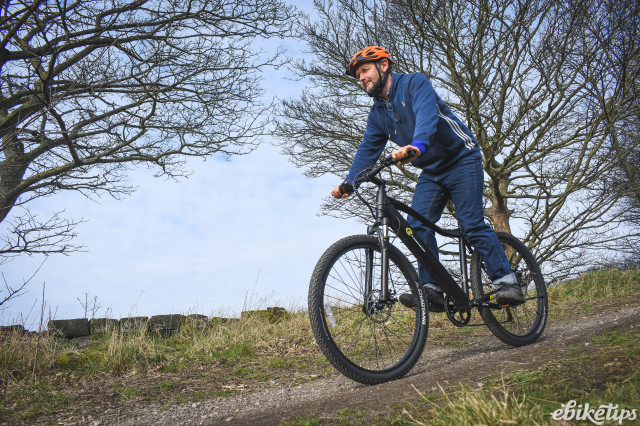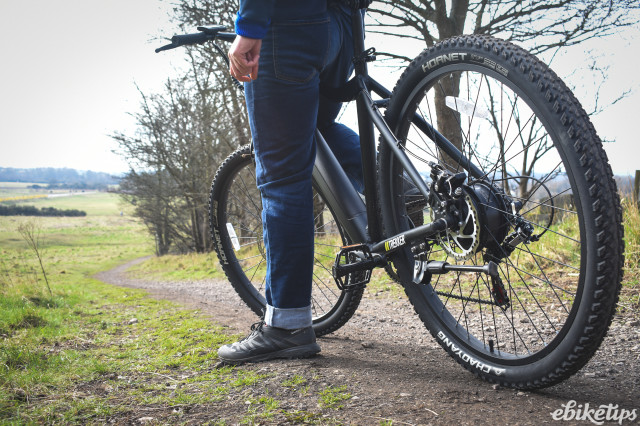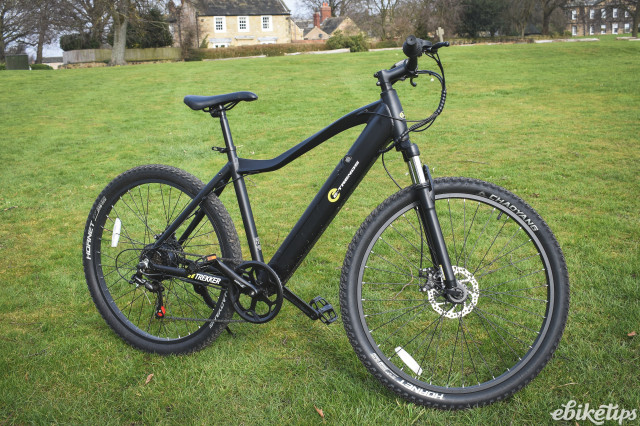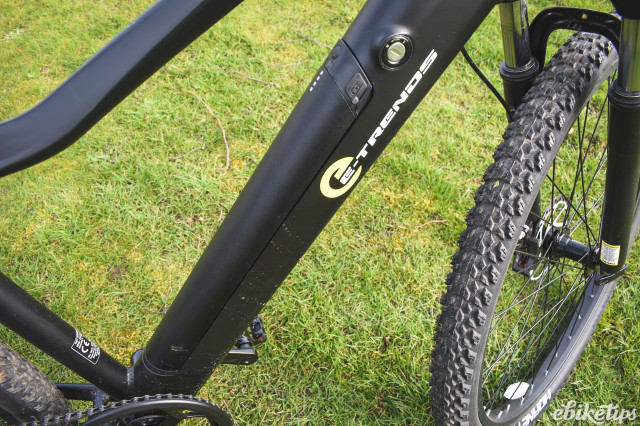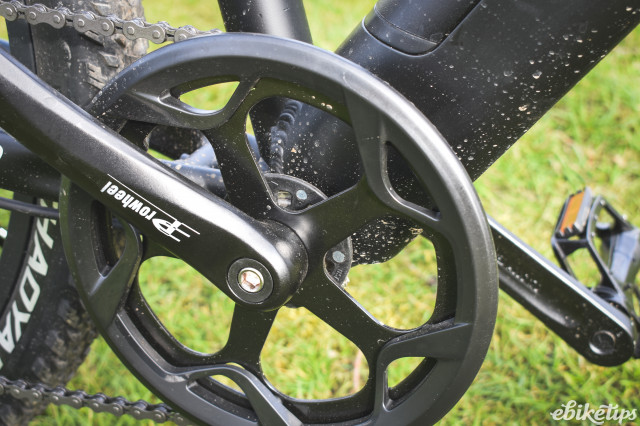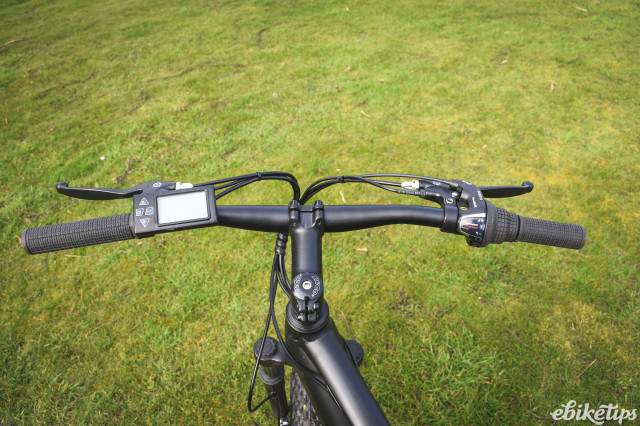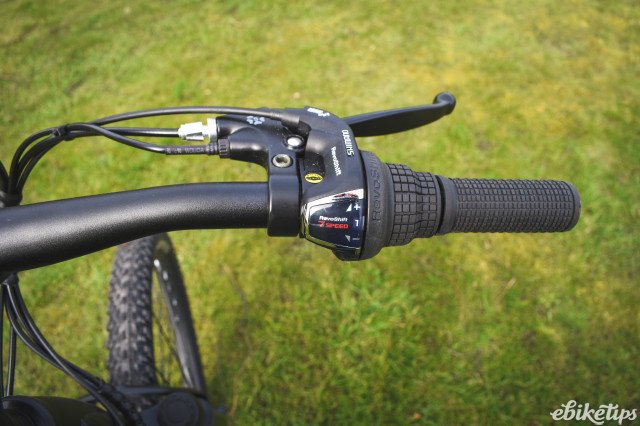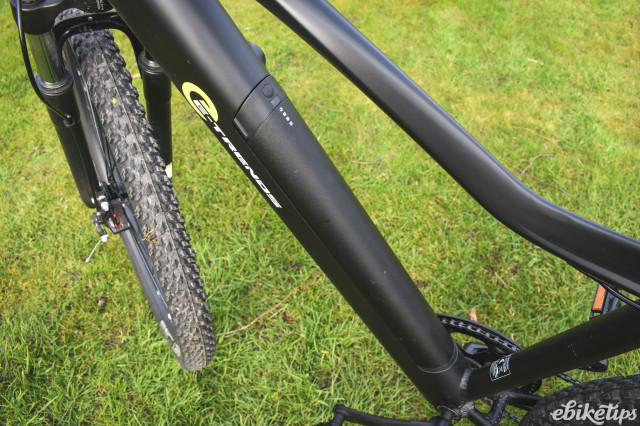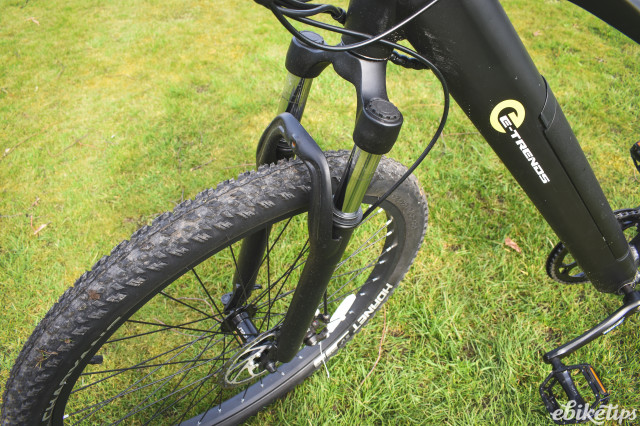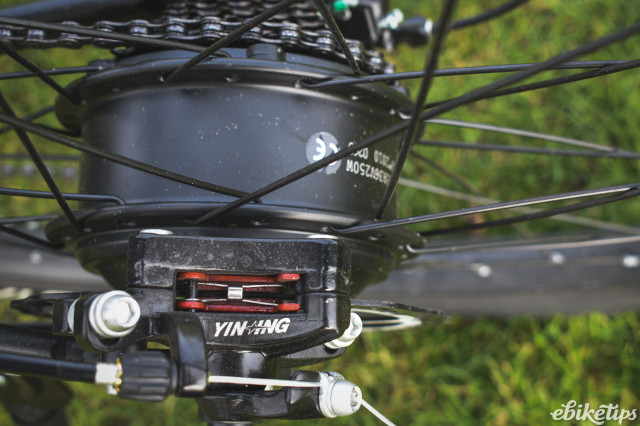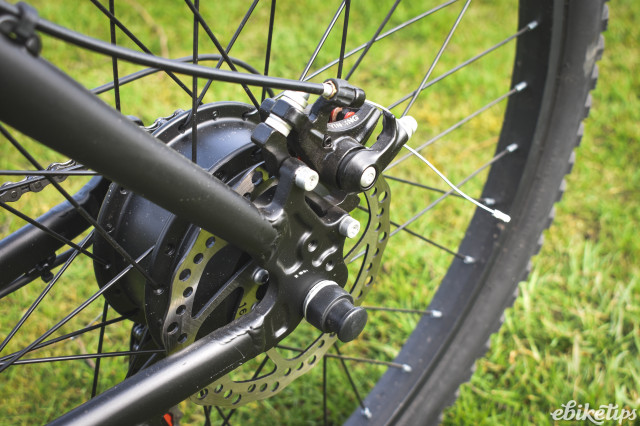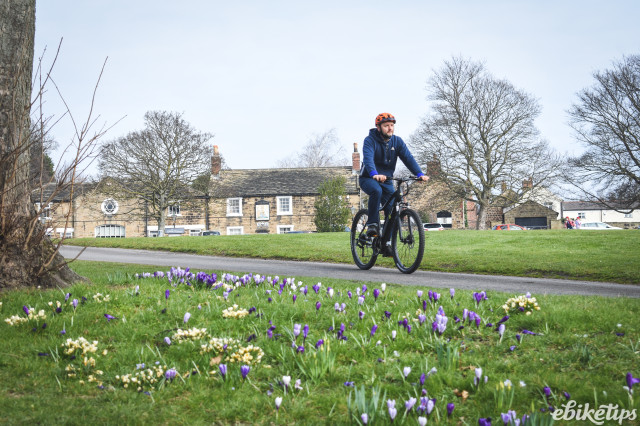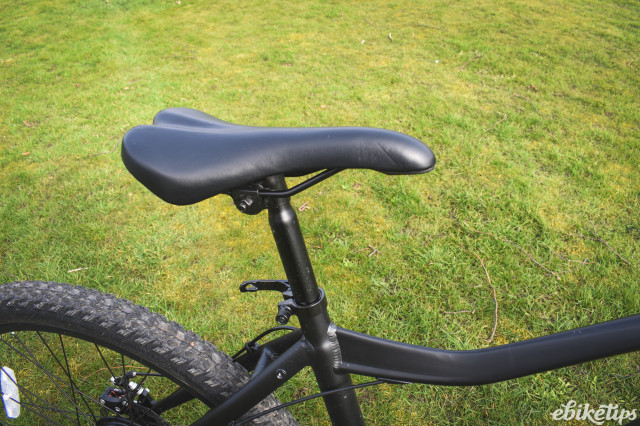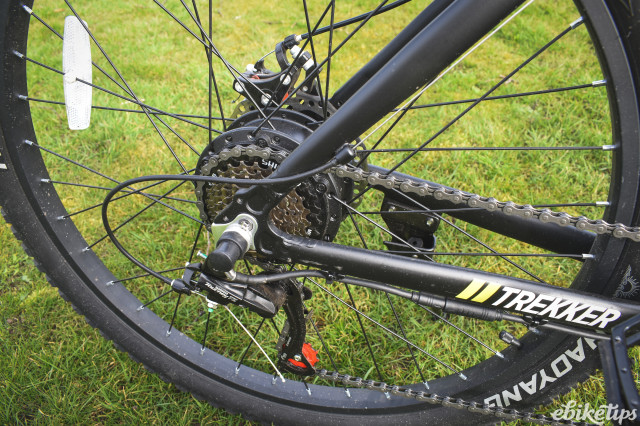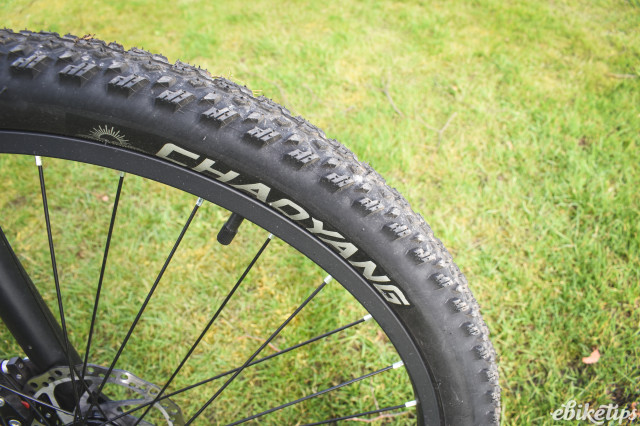E-Trends Trekker
Overview
- Good motor power
- One of the lowest priced models to feature an in-frame battery
- Good trail ability
- Pedal sensing power delivery very poor
- Gearing too high
E-Trends is a UK-based company that has just introduced a third e-bike model into its range, the Trekker. It also has the folding Fly and the City model, and we found the latter rather heavy with a very poor rear brake.
The Trekker looks much lighter and sleeker and has a frame-integrated battery and dipped top tube to give it unisex appeal. It’s clearly looking to appeal to a sportier group of riders.
E-Trends Trekker: Spec
Clearly most of the manufacturing budget has gone on the alloy frame and integrated 270Wh battery and the manufacturers have done a decent job with it. It looks sturdily built with clean welds and the battery inserts nice and easily with a positive locking click. I was a bit concerned there was no weather sealing where the battery sits in the frame though I didn’t have the chance to test it in any really heavy rain (though it did stand up to a sustained sprinkling with a hosepipe).
The motor is a really bulky looking unbranded rear hub design with power controlled by a handlebar LCD display.
The rest of the spec is pretty budget, but certainly a step up from the City model which used an awful band brake. The Trekker features Yin-Ing disc brakes, seven Shimano Tourney derailleur gears and Chaoyang Hornet mtb tyres. There is an unbranded front suspension fork.
The only ‘extra’ equipment the Trekker comes with is a kickstand, which is disappointing for the price point, given that many competing models in this price bracket will come with guards and a rack. There are mounting points for mudguards and a rear pannier rack which would turn the bike from a trail hybrid into a serviceable commuter.
At 21.2kg it’s not as light as it looks but it’s a huge improvement on the City model and around 20kg in weight is comparatively OK in e-bike terms.
E-Trends Trekker: The Ride
The motor gives a nice strong boost on all three levels but level one assists only up to about 10 mph and then level two up to about 13mph and for an extra couple of mph you need to switch to level three. This rather crude power delivery is mirrored in the cut in and cut out of the motor – it may take a few seconds for the power to come in after you have started turning the pedals and similarly takes seconds for it to cut out after you have finished pedalling. This means you need to keep fingers on the brake levers at the ready as depressing them slightly will cut the power quickly. Some e-bike riders might be used to this system and accept it as a compromise on a budget e-bike but others may not be happy with it at all. It's certainly not the best power delivery we've seen at this kind of price.
Despite all this it performed well enough on my mile long hill climb, being only a few seconds off the pace of the much higher priced crank drives.
The bike is nice to ride without power, with a free-running freewheel and light feeling wheels. The fork felt unnaturally stiff but I actually preferred it to many other budget sprung forks which can be ‘clanky’ and a little loose feeling. It would be better to have a light alloy fork though to save weight – the only real benefit I get from such cheap forks is when going over larger dropoffs like curbs. The cable-operated disk brakes had a decent amount of stopping power, even if they felt a little spongy compared to others I have tried. The tyres were nice and grippy and a joy to use on trails and appear to have some form of puncture protection, branded as 'shark skin'.
The gearing is way too high: I was travelling at approaching 30mph downhill and still wasn’t in top gear. It should be a relatively easy matter for a bike shop to lower it by swapping out the rear screw-on sprocket cluster or the front chainring, but on the other hand it's an extra cost. The high gearing also affects the power delivery which depends on the magnet sensor round the pedal crank being able to spin quite quickly, and the high gearing makes that difficult to do. In short you get decent power as long as you can keep a good speed up and keep the pedals turning quickly. Hill starts on steep hills are particularly tricky. The magnet disc only has five magnets on it which appears to be the root of the poor power delivery – better systems have a larger number so power delivery is quicker and smoother. The twelve magnet systems on other e-bikes I have tried are certainly a huge improvement.
E-Trends Trekker: Value
Check out our guide to budget e-bikes to see how this compares to other models around the £1000 mark. The battery looks a little small compared to similarly priced models but most of all I felt the very crude power delivery let it down – my range test of 21.5 miles from the battery showed it to be relatively inefficient, which isn’t surprising given the amount of run on after you stop pedalling.
If it was a couple of hundred pounds less it would be a contender to go in the list of best budget e-bikes; of course you get quality and spec compromises on any budget product but the Trekker’s crude power delivery in particular mean it falls short of others in this price bracket. A pity, as there are plenty of other things to like about the bike.
